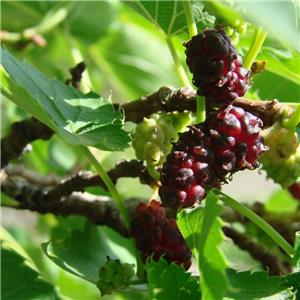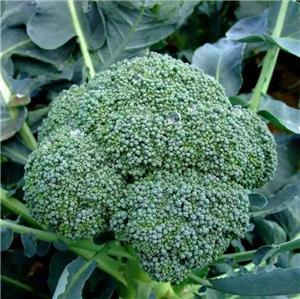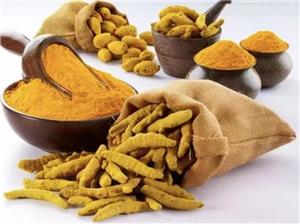20 Foods That Are High in Vitamin C
Vitamin C is a water-soluble vitamin that’s found in many foods, particularly fruits and vegetables.
It functions as a powerful antioxidant in the body and plays important roles in immune function, neurotransmitter production, collagen synthesis, and more. Getting enough vitamin C in your diet may help reduce the risk of common health conditions like heart disease (
Additionally, Vitamin C is vital for collagen synthesis, connective tissue, bones, teeth, and your small blood vessels (
The current daily value (DV) for vitamin C is 90 mg.
Deficiency symptoms include higher susceptibility to infections, bleeding gums, frequent bruising and infections, poor wound healing, anemia, and scurvy (
Here are 20 foods that are high in vitamin C.
The Kakadu plum (Terminalia ferdinandiana) is an Australian native superfood containing 100 times more vitamin C than oranges.
It has the highest known concentration of vitamin C, containing up to 2,907 mg per 100 grams. Just one plum (approximately 15 grams) packs 436 mg of vitamin C, which is 484% of the DV (6,
It’s also rich in potassium, vitamin E, and the antioxidant lutein, which may benefit eye health (
SUMMARYKakadu plums contain up to 2,907 mg of vitamin C per 100 grams, making it the richest known source of this vitamin. Just one plum delivers around 484% of the DV.
Just one-half cup (49 grams) of red acerola cherries (Malpighia emarginata) delivers 825 mg of vitamin C, or 916% of the DV (
Cherries are a rich source of polyphenols, or micronutrients found in plants. They’re also rich in Vitamin C, giving them antioxidant and anti-inflammatory properties (
SUMMARYJust one-half cup of acerola cherries delivers 916% of the recommended DV for vitamin C. The fruit may also reduce oxidative stress, inflammation, and exercise-induced muscle soreness.
The rose hip is a small, sweet, tangy fruit from the rose plant. It’s loaded with vitamin C.
Just 100 grams of rose hips provide 426 mg of vitamin C, or 473% of the DV (
Vitamin C is needed for collagen synthesis, which supports skin integrity as you age.
SUMMARYRose hips provide 426 mg of vitamin C per 100 grams. Around six pieces of this fruit deliver 132% of the DV and encourage healthier-looking skin.
One green chili pepper contains 109 mg of vitamin C, or 121% of the DV. In comparison, one red chili pepper delivers 65 mg, or 72% of the DV (
Moreover, there’s also evidence that hot red chili pepper consumption may decrease mortality (
However, more research is required to fully understand the health benefits of chili peppers.
SUMMARYGreen chili peppers contain 242 mg of vitamin C per 100 grams. Therefore, one green chili pepper delivers 121% of the DV, while one red chili pepper delivers 72%.
This pink-fleshed tropical fruit is native to Mexico and South America.
A single guava contains 125 mg of vitamin C, or 138% of the DV. It’s particularly rich in the antioxidant lycopene (
A 6-week study involving 45 young, healthy people found that eating 400 grams of peeled guava per day, or around 7 pieces of this fruit, significantly lowered their blood pressure and total cholesterol levels (
SUMMARYGuavas contain 228 mg of vitamin C per 100 grams. One guava fruit delivers 138% of the DV for this vitamin.
The vitamin C content of sweet or bell peppers increases as they mature.
One large yellow pepper provides 342 mg of vitamin C, or 380% of the DV, which is over twice the amount found in green peppers (
Consuming enough vitamin C is important for your eye health and may help protect against cataract progression.
A study in over 300 women found that those with higher vitamin C intakes had a 33% lower risk of cataract progression, compared with those with the lowest intakes (
SUMMARYYellow peppers contain the highest vitamin C concentration of all sweet peppers with 183 mg per 100 grams. One sweet yellow pepper delivers 380% of the recommended DV.
One-half cup (56 grams) of blackcurrants (Ribes nigrum) contains 102 mg of vitamin C, or 113% of the DV (
Antioxidant flavonoids known as anthocyanins give them their rich, dark color.
Studies have shown that diets high in antioxidants like vitamin C and anthocyanins may reduce oxidative damage associated with chronic diseases, including heart disease, cancer, and neurodegenerative diseases (
SUMMARYBlackcurrants contain 181 mg of vitamin C per 100 grams. One-half cup of blackcurrants packs 113% of the DV for vitamin C and may help reduce chronic inflammation.
This sweet, high-fiber fruit is packed with vitamin A (
Cantaloupe is also a good source of Vitamin C.
One cup of cantaloupe slices contains 17.4 mg of Vitamin C, which is 19% of what is recommended for adults daily (
SUMMARYOne cup of cantaloupe slices contains 17.4 grams of Vitamin C, which is 19% of the DV. The fruit is also packed with nutrients, including vitamin A and fiber.
Two tablespoons (8 grams) of fresh parsley contain 10 mg of vitamin C, providing 11% of the recommended DV (
Parsley is a significant source of vitamin K, antioxidants, and vitamin C.
Eating foods rich in vitamin C may reduce your risk of cancer.
A 2018 study found that increasing vitamin C by 100 mg per day reduced the risk of cancer by 7% (
Additionally, increasing dietary vitamin C by 150 mg per day was shown to lower prostate cancer risk by up to 5% in cohort studies and by 21% in case-control studies (
SUMMARYParsley contains 133 mg of vitamin C per 100 grams. Sprinkling two tablespoons of fresh parsley on your meal delivers 11% of the DV for vitamin C, which helps increase iron absorption.
One cup of raw chopped mustard spinach provides 195 mg of vitamin C, or 217% of the DV (
Even though heat from cooking lowers the vitamin C content in foods, one cup of cooked mustard greens still provides 117 mg of vitamin C, or 130% of the DV (
As with many dark, leafy greens, mustard spinach is also high in vitamin A, potassium, calcium, manganese, fiber, and folate.
SUMMARYMustard spinach contains 130 mg of vitamin C per 100 grams. One cup of this leafy green provides 217% of the DV for vitamin C when raw, or 130% when cooked.
Kale is a cruciferous vegetable.
A 100-gram portion of raw kale provides 93 mg of vitamin C, or 103% of the DV. It also supplies high quantities of vitamin K and the carotenoids lutein and zeaxanthin (
One cup (118 g) of cooked kale provides 21 mg, or 23% of the DV for vitamin C (
While cooking this vegetable reduces its vitamin C content, one study found that boiling and frying leafy greens can increase the bioavailability of health-promoting compounds, which may help reduce chronic inflammatory diseases (
SUMMARYKale contains 93 mg of vitamin C per 100 grams, while a lightly steamed cup provides 21 mg.
One medium kiwi packs 56 mg of vitamin C, or 62% of the DV (
Research shows that kiwis can have an inhibitory effect on blood platelets, which may help reduce the risk of blood clots and stroke (
Kiwi consumption may also benefit the immune system.
A study involving 14 men with vitamin C deficiency found that eating two kiwis daily for 4 weeks increased white blood cell activity by 20%. Blood levels of vitamin C normalized after just 1 week, having increased by 275% (
SUMMARYKiwis contain 75 mg of vitamin C per 100 grams. One medium-sized kiwi provides 62% of the DV for vitamin C, which benefits blood circulation and immunity.
Broccoli is a cruciferous vegetable. One-half cup of cooked broccoli provides 51 mg of vitamin C, or 57% of the DV (
Numerous observational studies have shown a possible association between eating plenty of vitamin-C–rich cruciferous vegetables and a decreased risk of cancer (
One study found that 30 grams a day of broccoli sprouts decreased markers of the inflammatory marker C-reactive protein in overweight adults (
SUMMARYBroccoli contains 65 mg of vitamin C per 100 grams. One-half cup of steamed broccoli provides 57% of the DV for vitamin C and may lower your risk of inflammatory diseases.
One-half cup of cooked Brussels sprouts provides 49 mg, or 54% of the DV for vitamin C (
Like most cruciferous vegetables, Brussels sprouts are also high in fiber, vitamin K, folate, vitamin A, manganese, and potassium.
Both vitamins C and K are important for your bone health. In particular, vitamin C aids the formation of collagen, which is the fibrous part your bones.
A large 2018 review found that a high dietary intake of vitamin C was associated with a 26% reduced risk of hip fractures and a 33% reduced risk of osteoporosis (
SUMMARYBrussels sprouts contain 85 mg of vitamin C per 100 grams. One-half cup of steamed Brussels sprouts provides 54% of the DV for vitamin C, which may improve your bone strength and function.
Lemons were given to sailors during the 1700s to prevent scurvy. One whole raw lemon provides 45 mg of vitamin C, or 50% of the DV (
The vitamin C in lemon juice also acts as an antioxidant, evident through its ability to prevent other fruits and foods from browning.
When fruits and vegetables are cut, the enzyme polyphenol oxidase is exposed to oxygen. This triggers oxidation and turns the food brown. Applying lemon juice to the exposed surfaces acts as a barrier, preventing the browning process (
Lemon juice has also been found to reduce blood pressure and lower the effects of bread on blood sugar (
SUMMARYLemons contain 53 mg of vitamin C per 100 grams, with one medium lemon delivering 50% of the DV. Vitamin C has potent antioxidant benefits and can keep your cut fruits and vegetables from turning brown.
One lychee provides nearly 7 mg of vitamin C, or 7.5% of the DV, while a one-cup serving provides 151% (
Research shows that lychees contain polyphenol compounds including gallic acid, rutin, epicatechin, chlorogenic acid, caffeic acid, kaempferol, quercetin, luteolin, and apigenin (
SUMMARYLychees contain 72 mg of vitamin C per 100 grams. One single lychee contains an average 7.5% of the DV for vitamin C, while a one-cup serving provides 151%.
Persimmons are an orange-colored fruit that resembles a tomato. There are many different varieties.
Though the Japanese persimmon is the most popular, the native American persimmon (Diospyros virginiana) contains almost nine times more vitamin C (
One American persimmon contains 16.5 mg of vitamin C, or 18% of the DV (
SUMMARYAmerican persimmons contain 66 mg of vitamin C per 100 grams. One American persimmon packs 18% of the DV for vitamin C.
One cup (145 grams) of papaya provides 88 mg of vitamin C, or 98% of the DV (
Vitamin C also aids memory and has potent anti-inflammatory effects in your brain (
In one study, 20 people with mild Alzheimer’s were given a concentrated papaya powder for 6 months. The results showed decreased inflammation and a 40% reduction in oxidative stress (
SUMMARYPapaya contains 61 mg of vitamin C per 100 grams. One cup of papaya delivers 88 mg of vitamin C, which may help support cognitive function.
One cup of sliced strawberries (166 grams) provides 97 mg of vitamin C, or 108% of the DV (
Strawberries contain a diverse and potent mix of vitamin C, manganese, flavonoids, folate, and other beneficial antioxidants.
Studies suggest that, because of their high content of nutrients and beneficial plant compounds, regularly eating strawberries may help reduce the risk of several health conditions (
SUMMARYStrawberries contain 59 mg of vitamin C per 100 grams. One cup of strawberry slices delivers 97 mg of vitamin C. This nutritious fruit may help your heart and brain health.
One medium-sized orange provides 83 mg of vitamin C, which is 92% of the DV (
Widely eaten, oranges make up a significant portion of dietary vitamin C intake.
Other citrus fruits can also help you meet your vitamin C needs. For example, half a pink grapefruit contains 46 mg, or 51% of the DV, a medium sized mandarin 24 mg, or 27% of the DV, and the juice of one lime 13 mg, or 14% of the DV (
SUMMARYOranges contain 59 mg of vitamin C per 100 grams. One medium orange delivers 83 mg of vitamin C. Other citrus fruits, such as grapefruit, mandarins, and limes, are also good sources of this vitamin.
Vitamin C is vital for your immune system, connective tissue, and heart and blood vessel health, among many other important roles.
Not getting enough of this vitamin can have negative effects on your health.
While citrus fruits may be the most well-known source of vitamin C, a wide variety of fruits and vegetables are rich in this vitamin and may even exceed the amounts found in citrus fruits.
By eating some of the foods suggested above each day, your needs should be covered.
A diet rich in vitamin C is an essential step toward positive health benefits and disease prevention.
Written by Caroline Hill, MHumNutr, BSc and Erin Kelly — Medically reviewed by Jillian Kubala, MS, RD, Nutrition — Updated on May 10, 2022, https://www.healthline.com




